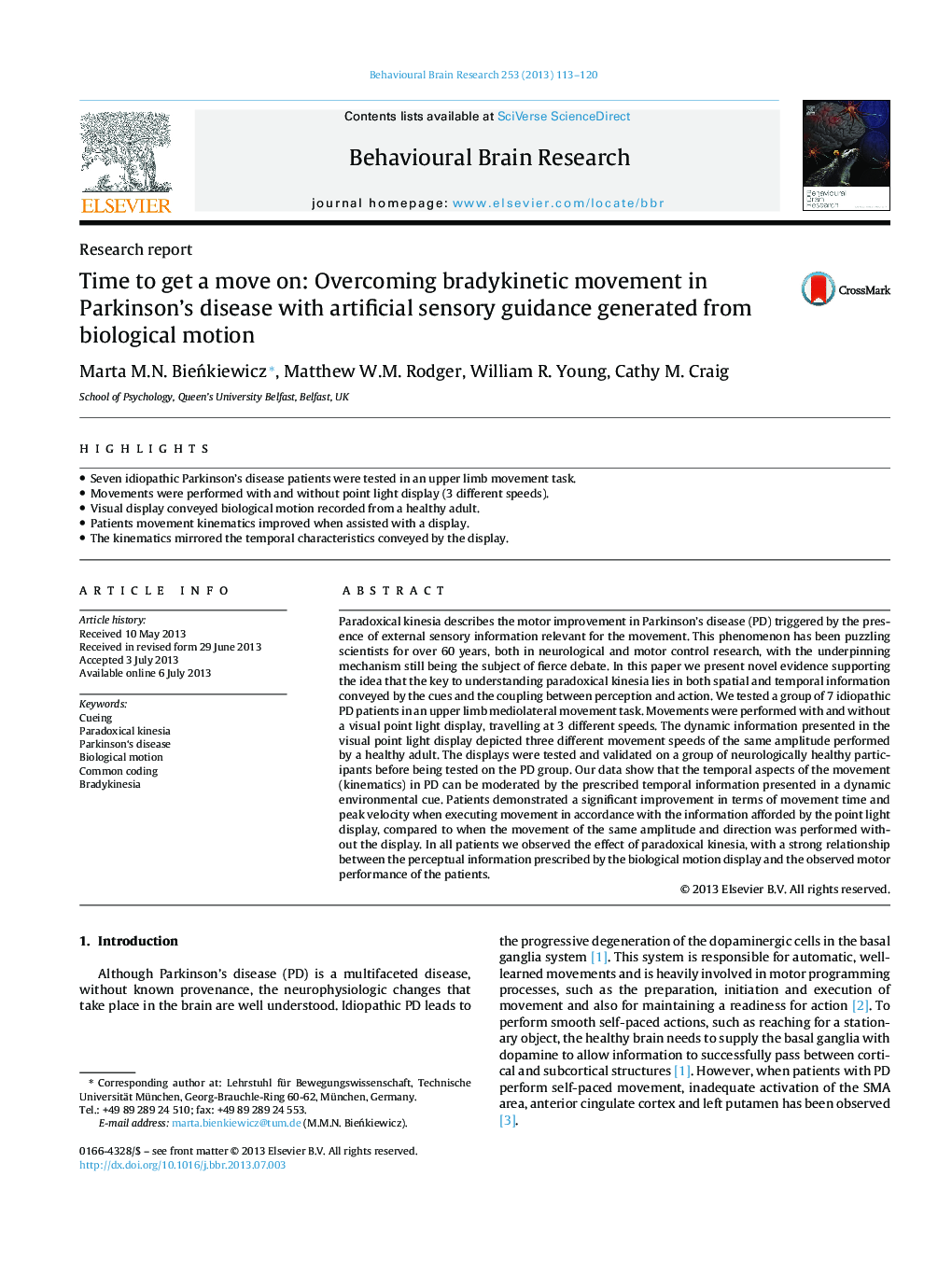| کد مقاله | کد نشریه | سال انتشار | مقاله انگلیسی | نسخه تمام متن |
|---|---|---|---|---|
| 6258648 | 1612979 | 2013 | 8 صفحه PDF | دانلود رایگان |
- Seven idiopathic Parkinson's disease patients were tested in an upper limb movement task.
- Movements were performed with and without point light display (3 different speeds).
- Visual display conveyed biological motion recorded from a healthy adult.
- Patients movement kinematics improved when assisted with a display.
- The kinematics mirrored the temporal characteristics conveyed by the display.
Paradoxical kinesia describes the motor improvement in Parkinson's disease (PD) triggered by the presence of external sensory information relevant for the movement. This phenomenon has been puzzling scientists for over 60 years, both in neurological and motor control research, with the underpinning mechanism still being the subject of fierce debate. In this paper we present novel evidence supporting the idea that the key to understanding paradoxical kinesia lies in both spatial and temporal information conveyed by the cues and the coupling between perception and action. We tested a group of 7 idiopathic PD patients in an upper limb mediolateral movement task. Movements were performed with and without a visual point light display, travelling at 3 different speeds. The dynamic information presented in the visual point light display depicted three different movement speeds of the same amplitude performed by a healthy adult. The displays were tested and validated on a group of neurologically healthy participants before being tested on the PD group. Our data show that the temporal aspects of the movement (kinematics) in PD can be moderated by the prescribed temporal information presented in a dynamic environmental cue. Patients demonstrated a significant improvement in terms of movement time and peak velocity when executing movement in accordance with the information afforded by the point light display, compared to when the movement of the same amplitude and direction was performed without the display. In all patients we observed the effect of paradoxical kinesia, with a strong relationship between the perceptual information prescribed by the biological motion display and the observed motor performance of the patients.
Journal: Behavioural Brain Research - Volume 253, 15 September 2013, Pages 113-120
